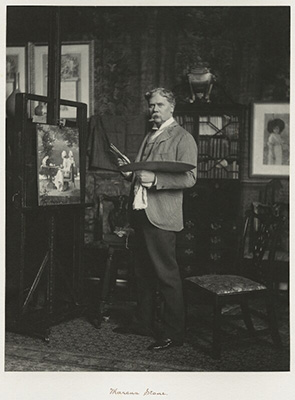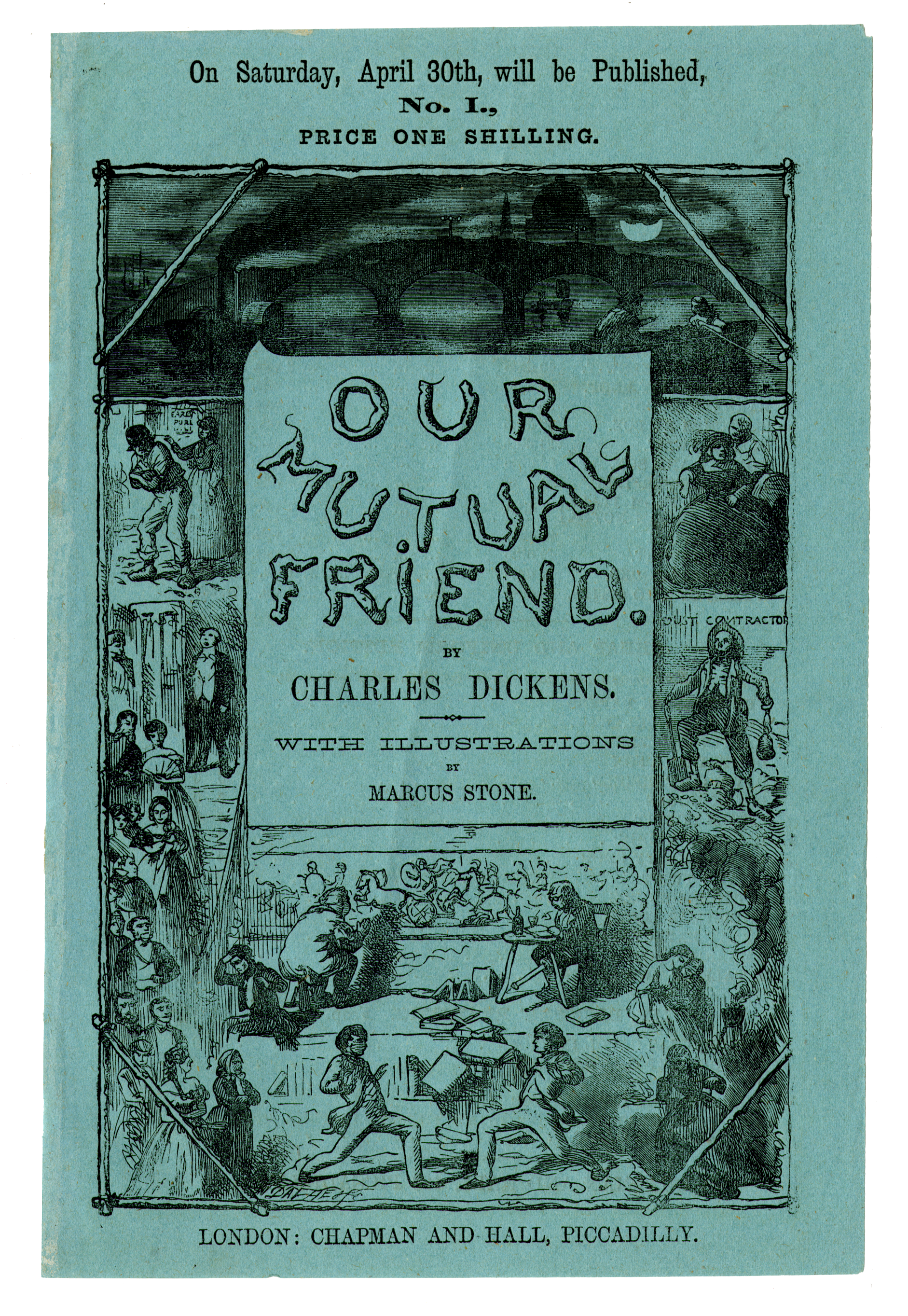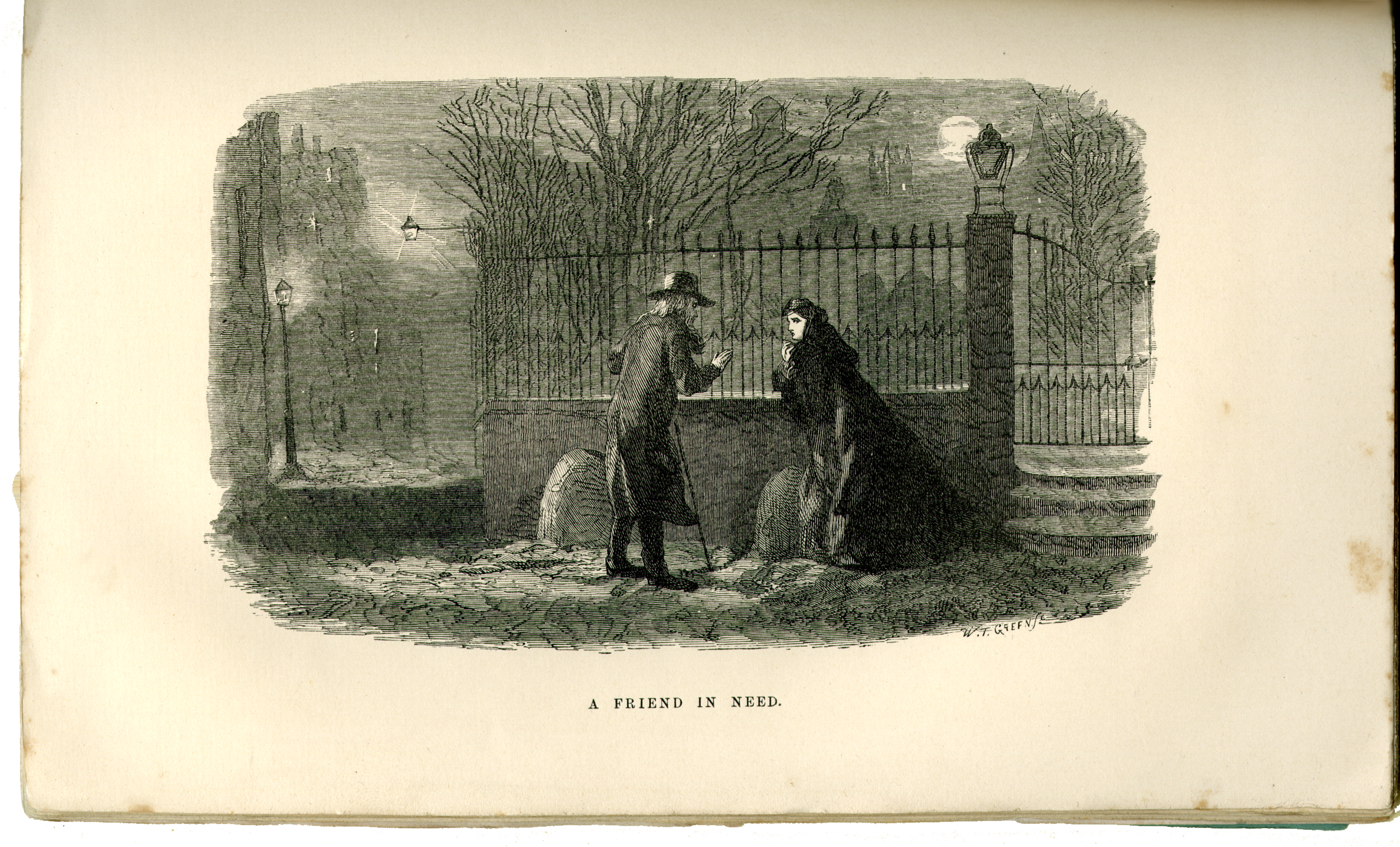Marcus Clayton Stone (1840-1921)

Marcus Clayton Stone was born in Hertfordshire in 1840, the son of Dickens's good friend, the illustrator Frank Stone (who created some of the illustrations for the Christmas book The Haunted Man). Marcus was interested in drawing and sketching from an early age, learning from his father and on his own. The family moved to London in 1850, where young Marcus met many of the great artists of the day, including illustrators George Cruikshank and Edwin Landseer; he met Dickens for the first time in 1851.
In 1853, at the age of thirteen, young Marcus sent Dickens a sketch of Jo, the crossing sweeper from Dickens's novel Bleak House. Dickens responded appreciatively, calling the sketch "excellent" and sending him a proof of Hablot K. Browne's illustration "Consecrated Ground" from the next installment of Bleak House, as well as a signed copy of A Child's History of England. Marcus went on to exhibit paintings at the Royal Academy, and met with success as early as 1858, the year before his father Frank died.


After Frank Stone's death, Dickens took particular interest in the son of his old friend. He hired Marcus to create the frontispiece to the Cheap edition of Little Dorrit (1861), the Library editions of American Notes, Pictures from Italy, A Child's History of England, and Great Expectations (1862), and the frontispiece for the Cheap edition of A Tale of Two Cities (1864).
Marcus Stone's most important contribution as illustrator of Dickens's work was his design for the wrapper and the forty illustrations for Dickens's last complete novel, Our Mutual Friend (1864-65). Stone's style was more naturalistic than Hablot K. Browne's work, which had tended more toward caricature and the grotesque. Stone's illustrations were produced in a different way than Browne's, too: Stone's designs were made into wood engravings, which were more fashionable in the mid-1860s than the steel etchings favored by Browne.
Stone illustrated Anthony Trollope's novel He Knew He Was Right (1869), but then moved away from book illustration and focused on painting, a field where he met with greater success and acclaim. He specialized in painting domestic scenes, and dramatic and romantic moments between couples. He married in 1877, and lived in the Holland Park area of London until his death in 1921.
Illustrations, Artwork, and Correspondence





Transcription of letter from Charles Dickens to Marcus Clayton Stone:
(On stationery from the "Office of All The Year Round")
Friday Seventh October 1864
My Dear Marcus.
It is all right. I mean that lettering rather to explain the general idea
(very difficult to be lettered otherwise), than the particular passage.
Affecly alys,
CD
Our Mutual Friend, 1st edition (1864-1865) - Monthly issues
Read more monthly issues from the first edition of Our Mutual Friend in the Digital WPI repository at https://digital.wpi.edu/show/v405sc83t.
Back
